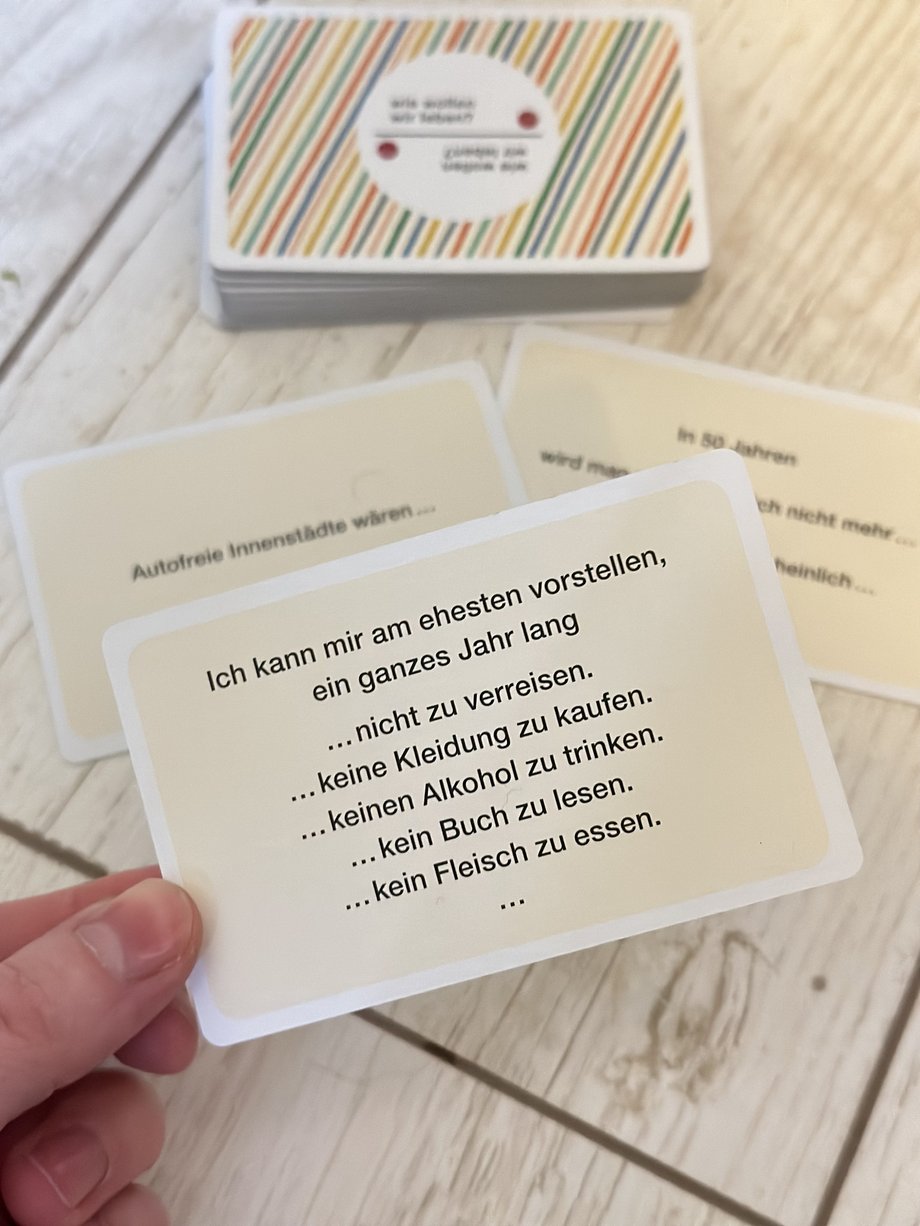How do we want to live?
Nobody really knows what the future holds. But of course we still have wishes, fears and expectations. We ask ourselves what will happen tomorrow, the day after tomorrow or in 50 years' time. How will the world change? Will we get climate change under control? And what about justice? The card game "How do we want to live?" from the Federal Agency for Civic Education offers plenty of ideas for discussion on these topics: What would you change? How do we want to live? Draw a card and find out together!
Number of participants
max. 10 people
Age recommendation
from 12 years
Duration
from 20 minutes
Place
Seminar room with free table
Structure and procedure
There is no fixed set of rules for the card game with 60 impulse cards. The following game variations can be used:
Game idea 1: Just dig in!
All cards are shuffled and placed face down on the table. One person starts and draws a card, silently reads the question and ...
Variation a) ... now reads the question aloud and answers it themselves. Then the person sitting on the left draws a new card.
Variation b) ... does not answer the question themselves, but asks another person from the group to answer the question.
Variation c) ... answers the question themselves and also asks another person in the group to answer the question.
Variation d) The cards are laid out with the questions facing up so that everyone can choose a question to answer (or have answered) according to the above options.
Game idea 2: I would like to get to know you.
For small groups: The cards are laid out face up on the table so that the questions can be read. All players choose a card. Then everyone in the group answers the question they have chosen.
For larger groups: The group leader chooses 2 to 3 cards themselves, which are now answered by everyone in turn.
Game idea 3: How well do we know each other?
You need pens and small pieces of paper for this: Place the cards face up on the table. Everyone chooses a card. The first person reads out their card. Everyone answers the question face down on a piece of paper. This is done in turn with all the questions. All folded slips of paper are collected in a container. One person begins to draw a slip of paper and read it out. Who can guess who in the group gave the answer?
Game idea 4: Are you here for the first time too?
This game variation is particularly suitable for first evenings at camps or for all groups that do not yet know each other well. You need a piece of paper and pens.
Variation 1: The cards are shuffled on the table with the questions facing up. All participants have enough time to choose a card at their leisure. In the subsequent round of introductions, everyone introduces themselves with their name and possibly also with other information that makes sense in this group and then answers the question they have chosen.
The slips of paper are needed in case someone wants to write down a question that another person has taken. The same question card can therefore be chosen by several people.
Variant 2: The group is divided into pairs. The pair chooses a card together. The pairs have a few minutes to introduce themselves and answer each other's question. The pairs then introduce themselves to the whole group.


